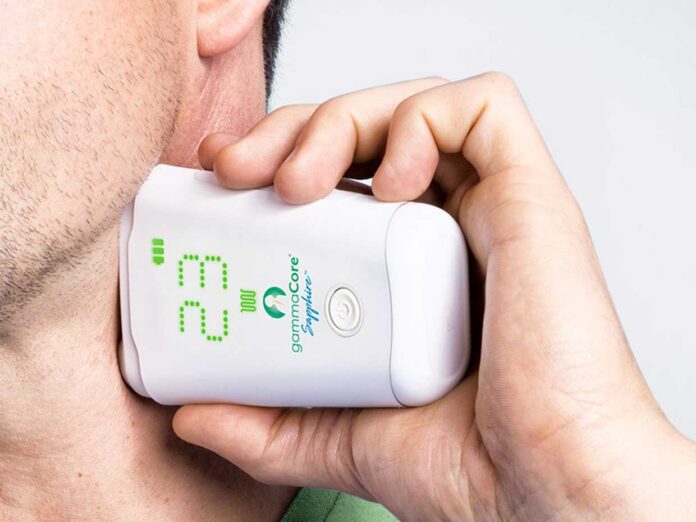Ready to take the plunge and invest in the best vagus nerve stimulation device on the market? First things first: you need to do your research! That way, you can be sure you’re choosing an effective option that meets your needs, provides value for money, and most importantly, works. So today we’ll examine some of the available vagus nerve stimulation devices to help narrow down your choices.
tVNS Devices
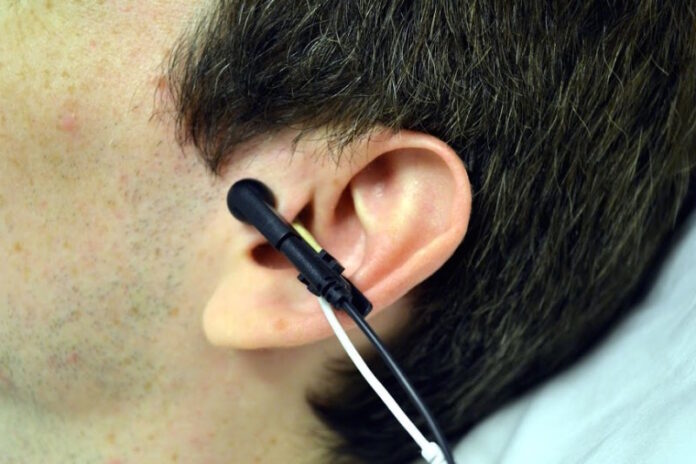
In some cases, more invasive measures are necessary for vagus nerve stimulation; in these cases, a surgical procedure might be required. This involves implanting a vagus nerve stimulation device under the skin in the chest, similar to a pacemaker. Then, an electrical current is delivered to the vagus nerve via this device, which helps treat particular medical conditions (including epilepsy and treatment-resistant depression) effectively.
However, these invasive measures aren’t the ones we focus on today. Instead, we’ll look at transcutaneous vagus nerve stimulation (tVNS) devices that stimulate this nerve through the skin rather than being under it. That means VNS is a lot more accessible for more people now than it ever was before.
How Does tVNS Work?
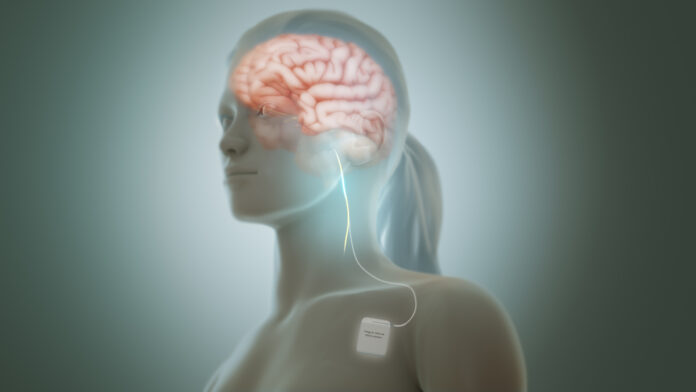
Before we tell you about some of the best vagus nerve stimulation device options, let’s talk more about how tVNS works and the benefits of this practice.
In short, a tVNS device stimulates this vital nerve with electrical pulses through your skin. The electrical pulses transfer energy to the nerve, which can help improve its functioning and reduce symptoms associated with a range of health conditions. This type of vagus nerve stimulation is non-invasive, meaning you don’t need any surgery or implantation for it to work. Additionally, it’s safe, comfortable, and easy to use at home, whether you’re doing chores, reading a good book, or kicking back and doing absolutely nothing.
For example, some devices can be worn as headphones, and others might be worn around the head like a headband, or you could use a stimulating device on your neck.
Even those who don’t deal with medical conditions can benefit from this option! So even if you don’t have epilepsy or another troubling disorder, they can still potentially improve your overall well-being. For example, many users of tVSN devices report having a brighter mood, better sleep, faster recovery, more tranquility, and simply just feeling better.
The Best Vagus Nerve Stimulation Devices on the Market
Here are six of the top vagus nerve stimulation devices (and other neurostimulation devices) to consider if you’re looking for a quality option that fits your needs:
1. Vagustim

This device is meant to be used on both ears simultaneously, as it has two separate earpieces connected by a band. The best part about this device is that it’s adjustable. That way, you can customize the intensity and frequency of the stimulation. Vagustim also comes with handy features such as remote Bluetooth access.
2. The Parasym™ device

With the Parasym™ device, you can adjust the intensity of the stimulation and control it with a simple smartphone app. This device is a good fit for those who want precise control over their VNS treatments, as you can set up individual programs for different conditions. Regarding frequency and duration of your sessions, they “recommend using the device for 1hr/day, where beneficial effects are typically observed within 8-12 weeks with daily use.”
3. The Fisher Wallace Stimulator®
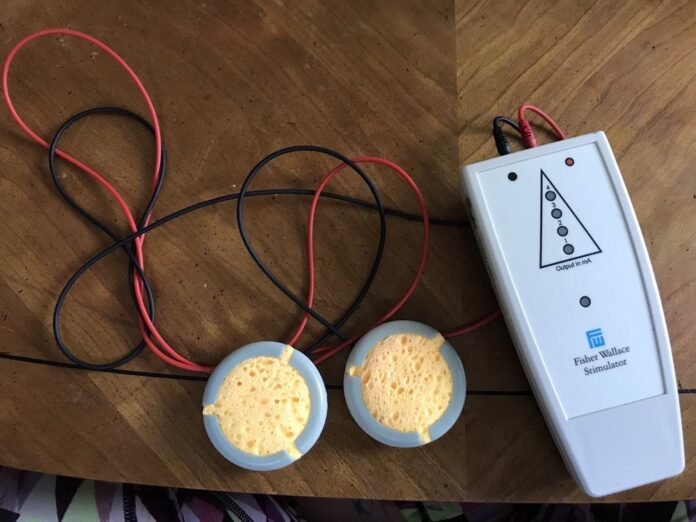
The FDA has cleared the Fisher Wallace Stimulator® to treat anxiety, depression, and/or insomnia. The pulses it delivers help encourage your brain to produce serotonin and other beneficial chemicals while reducing cortisol, the stress hormone. It’s battery operated, and users wear a headband securely around their head with electrodes placed underneath it. Users are instructed to wear the device for 20 minutes in the morning and another 20 minutes before bed.
4. Xen by Neuvana

Considered the best vagus nerve stimulation device that’s non-invasive, Xen by Neuvana is touted as incredibly user-friendly and practical. This device targets the vagus nerve through the ear. First, users wear vagus nerve-stimulating headphones that connect to a handheld device. Then, this device wirelessly connects to your smartphone, where you can control the length and intensity of your VNS sessions.
5. Caputron
Another option to consider is the Caputron device. It also stimulates the vagus nerve through the ear, but not with headphones. Instead, it clips to the ear and the handheld device delivers the electrical stimulation. It also has a handy feature that lets you adjust the intensity while in session, allowing customized treatments.
6. gammaCore®
The gammaCore® device best suits those with chronic migraine and cluster headache sufferers. This handheld device uses non-invasive vagus nerve stimulation (nVNS) to deliver electric pulses via an electrode placed on the neck near your ear.
Vagus Nerve Stimulation Device: FAQs
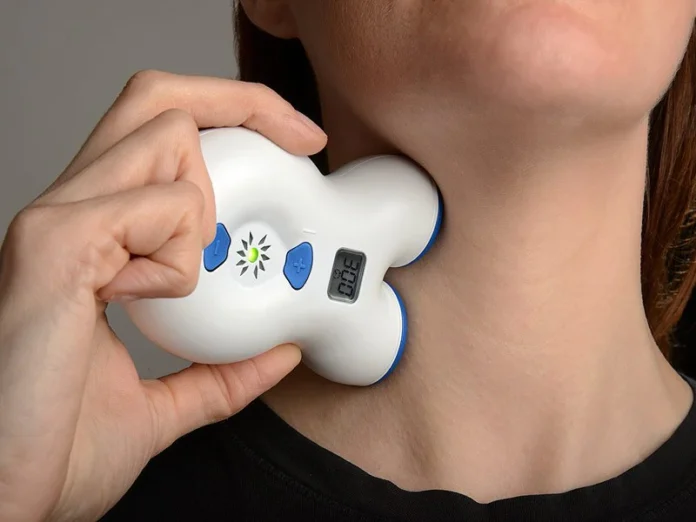
Now that we’ve covered six of the best vagus nerve stimulation devices on the market, let’s go over some of your most common questions about VNS.
What is the best vagus nerve stimulator?
There is no one-size-fits-all answer to this question, as the best device for you will depend on your individual needs and preferences. Some of the best machines on the market include the Vagustim, Parasym™, Fisher Wallace Stimulator®, Xen by Neuvana, Caputron, and gammaCore®.
How does a vagus nerve stimulator work?
A vagus nerve stimulator delivers electrical impulses to the vagus nerve, which runs from your brainstem down to your abdomen. These electrical impulses help regulate various body functions, such as heart rate and digestion. While VNS is most commonly used to treat certain conditions, it can also be used as preventative healthcare.
Are there any risks associated with vagus nerve stimulation?
As with any medical treatment, there are potential risks associated with VNS. Remember, with non-invasive tVNS, the risks are much lower than with surgical options. Some side effects may include coughing, gagging, hoarseness, and discomfort in the area where electrodes are placed. But this can vary depending on the device you use. Further, these unwanted effects tend to be mild and not long-lasting, if they occur at all.
Now that you know more about the vagus nerve stimulation devices available, you can make an informed decision about which machine best meets your needs. Whether you opt for an implantable or non-invasive option, you can feel confident knowing VNS is a safe and promising therapy option. With regular use and consistent care, VNS may help improve your quality of life.
